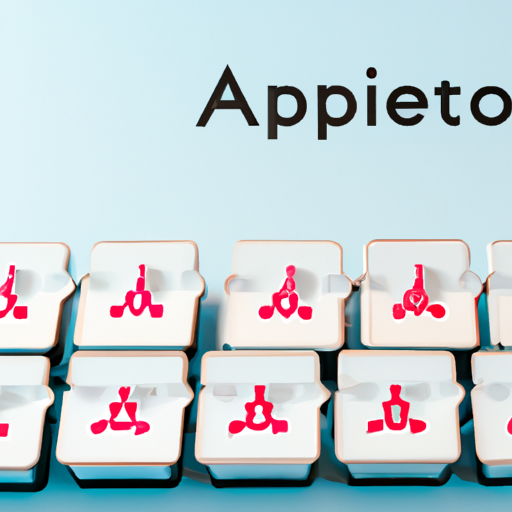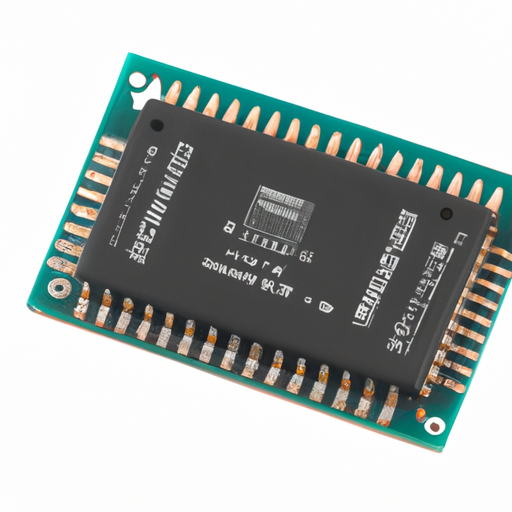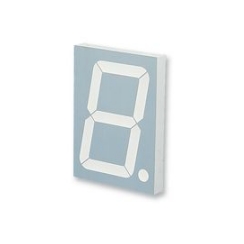What are the popular carbon film resistor product models?
What are the Popular Carbon Film Resistor Product Models?
I. Introduction
A. Definition of Carbon Film Resistors
Carbon film resistors are passive electronic components that provide resistance in electrical circuits. They are made by depositing a thin layer of carbon on a ceramic substrate, which is then cut into a specific shape to create the desired resistance value. The carbon film's resistance is determined by its thickness, length, and the area of the film exposed to the circuit. These resistors are widely used in various electronic applications due to their reliability and performance.
B. Importance of Carbon Film Resistors in Electronics
In the world of electronics, resistors play a crucial role in controlling current flow, dividing voltages, and protecting sensitive components. Carbon film resistors, in particular, are favored for their stability, low noise, and good temperature characteristics. They are commonly used in audio equipment, power supplies, and consumer electronics, making them an essential component in modern electronic devices.
C. Overview of the Article's Purpose
This article aims to provide an in-depth look at popular carbon film resistor product models, exploring their specifications, applications, and the leading manufacturers in the market. By the end of this article, readers will have a comprehensive understanding of carbon film resistors and be better equipped to choose the right model for their specific needs.
II. Understanding Carbon Film Resistors
A. Composition and Structure
1. Materials Used
Carbon film resistors are primarily composed of a carbon-based film, which is deposited onto a ceramic substrate. The carbon film is typically mixed with other materials to enhance its properties, such as stability and temperature coefficient. The ceramic substrate provides mechanical strength and thermal stability, ensuring the resistor can withstand varying environmental conditions.
2. Manufacturing Process
The manufacturing process of carbon film resistors involves several steps:
1. **Substrate Preparation**: The ceramic substrate is cleaned and prepared for the deposition of the carbon film.
2. **Film Deposition**: A thin layer of carbon is deposited onto the substrate using techniques such as vacuum deposition or sputtering.
3. **Trimming**: The resistance value is adjusted by trimming the film, which involves cutting or etching away portions of the carbon layer.
4. **Encapsulation**: The resistors are then encapsulated in a protective coating to prevent damage and ensure reliability.
B. Characteristics and Specifications
1. Resistance Range
Carbon film resistors are available in a wide range of resistance values, typically from a few ohms to several megaohms. This versatility makes them suitable for various applications, from low-power circuits to high-precision devices.
2. Tolerance Levels
Tolerance refers to the allowable deviation from the specified resistance value. Carbon film resistors generally have tolerances ranging from ±1% to ±5%, with higher precision models available for specialized applications.
3. Temperature Coefficient
The temperature coefficient indicates how much the resistance value changes with temperature. Carbon film resistors typically have a temperature coefficient of ±100 to ±200 ppm/°C, making them stable across a range of operating temperatures.
C. Advantages and Disadvantages
1. Benefits of Using Carbon Film Resistors
Low Noise: Carbon film resistors produce minimal electrical noise, making them ideal for audio and precision applications.
Stability: They exhibit good stability over time and under varying environmental conditions.
Cost-Effective: Carbon film resistors are generally more affordable than other resistor types, such as metal film resistors.
2. Limitations Compared to Other Resistor Types
Power Rating: Carbon film resistors typically have lower power ratings compared to wire-wound resistors, limiting their use in high-power applications.
Temperature Sensitivity: While they have good temperature stability, they may not perform as well as metal film resistors in extreme temperature conditions.
III. Popular Carbon Film Resistor Product Models
A. Overview of Leading Manufacturers
Several manufacturers dominate the carbon film resistor market, each offering a range of high-quality products. Some of the leading manufacturers include:
1. **Vishay**
2. **Yageo**
3. **Panasonic**
4. **Bourns**
5. **KOA Speer**
B. Detailed Review of Popular Models
1. Vishay CFR Series
Specifications: The Vishay CFR series offers a resistance range from 1 ohm to 10 megaohms, with tolerances of ±1% and ±5%. They have a power rating of up to 0.5 watts and a temperature coefficient of ±100 ppm/°C.
Applications: These resistors are widely used in consumer electronics, automotive applications, and industrial equipment due to their reliability and performance.
2. Yageo MFR Series
Specifications: The Yageo MFR series features a resistance range from 1 ohm to 10 megaohms, with tolerances of ±1% and ±5%. They are rated for power up to 0.25 watts and have a temperature coefficient of ±100 ppm/°C.
Applications: Commonly used in audio equipment, power supplies, and telecommunications, the MFR series is known for its low noise and stability.
3. Panasonic ERJ Series
Specifications: The Panasonic ERJ series offers a resistance range from 1 ohm to 10 megaohms, with tolerances of ±1% and ±5%. They have a power rating of up to 0.25 watts and a temperature coefficient of ±100 ppm/°C.
Applications: These resistors are ideal for use in consumer electronics, automotive applications, and industrial equipment, providing excellent performance and reliability.
4. Bourns CR Series
Specifications: The Bourns CR series features a resistance range from 1 ohm to 10 megaohms, with tolerances of ±1% and ±5%. They are rated for power up to 0.25 watts and have a temperature coefficient of ±100 ppm/°C.
Applications: These resistors are commonly used in audio equipment, power supplies, and telecommunications, known for their low noise and stability.
5. KOA Speer RK Series
Specifications: The KOA Speer RK series offers a resistance range from 1 ohm to 10 megaohms, with tolerances of ±1% and ±5%. They have a power rating of up to 0.25 watts and a temperature coefficient of ±100 ppm/°C.
Applications: These resistors are widely used in consumer electronics, automotive applications, and industrial equipment, providing excellent performance and reliability.
IV. Applications of Carbon Film Resistors
A. Common Uses in Electronic Circuits
1. Audio Equipment
Carbon film resistors are commonly used in audio equipment due to their low noise characteristics. They help control signal levels and prevent distortion, ensuring high-quality sound reproduction.
2. Power Supplies
In power supply circuits, carbon film resistors are used for voltage division and current limiting. Their stability and reliability make them ideal for maintaining consistent performance in power supply applications.
3. Consumer Electronics
From televisions to smartphones, carbon film resistors are found in various consumer electronics. They help regulate current flow and protect sensitive components from damage.
B. Specialized Applications
1. Medical Devices
In medical devices, precision and reliability are paramount. Carbon film resistors are used in various applications, including monitoring equipment and diagnostic devices, where accurate measurements are critical.
2. Automotive Electronics
Carbon film resistors are widely used in automotive electronics, including engine control units and sensor applications. Their stability and performance under varying temperature conditions make them suitable for automotive environments.
3. Industrial Equipment
In industrial applications, carbon film resistors are used in control systems, automation equipment, and instrumentation. Their reliability and performance in harsh environments make them a preferred choice for industrial applications.
V. Factors to Consider When Choosing Carbon Film Resistors
A. Resistance Value and Tolerance
When selecting a carbon film resistor, it's essential to consider the required resistance value and tolerance. Ensure that the resistor meets the specifications of your circuit to achieve optimal performance.
B. Power Rating
The power rating indicates how much power the resistor can handle without overheating. Choose a resistor with an appropriate power rating for your application to prevent damage and ensure reliability.
C. Temperature Coefficient
The temperature coefficient affects how the resistance value changes with temperature. Select a resistor with a suitable temperature coefficient for your application, especially if it will be exposed to varying temperatures.
D. Size and Form Factor
Consider the physical size and form factor of the resistor, as this can impact its compatibility with your circuit design. Ensure that the resistor fits within the available space and meets your design requirements.
E. Cost Considerations
While carbon film resistors are generally cost-effective, it's essential to consider your budget when selecting a model. Compare prices from different manufacturers and choose a resistor that meets your performance requirements without exceeding your budget.
VI. Conclusion
A. Summary of Key Points
Carbon film resistors are essential components in modern electronics, offering stability, low noise, and cost-effectiveness. With a wide range of resistance values and tolerances, they are suitable for various applications, from consumer electronics to specialized medical devices.
B. Future Trends in Carbon Film Resistor Technology
As technology continues to advance, we can expect improvements in carbon film resistor technology, including enhanced performance, miniaturization, and increased reliability. Manufacturers are likely to focus on developing resistors that can withstand extreme conditions and provide even greater precision.
C. Final Thoughts on Selecting the Right Product Model
When choosing a carbon film resistor, consider factors such as resistance value, power rating, temperature coefficient, size, and cost. By understanding the specifications and applications of popular models, you can make an informed decision that meets your specific needs.
VII. References
A. List of Sources and Further Reading
1. Vishay Technology. (n.d.). Carbon Film Resistors. Retrieved from [Vishay Website](https://www.vishay.com)
2. Yageo Corporation. (n.d.). MFR Series Resistors. Retrieved from [Yageo Website](https://www.yageo.com)
3. Panasonic Corporation. (n.d.). ERJ Series Resistors. Retrieved from [Panasonic Website](https://www.panasonic.com)
4. Bourns, Inc. (n.d.). CR Series Resistors. Retrieved from [Bourns Website](https://www.bourns.com)
5. KOA Speer Electronics. (n.d.). RK Series Resistors. Retrieved from [KOA Speer Website](https://www.koaspeer.com)
B. Manufacturer Websites and Product Catalogs
- Vishay: [Vishay Product Catalog](https://www.vishay.com)
- Yageo: [Yageo Product Catalog](https://www.yageo.com)
- Panasonic: [Panasonic Product Catalog](https://www.panasonic.com)
- Bourns: [Bourns Product Catalog](https://www.bourns.com)
- KOA Speer: [KOA Speer Product Catalog](https://www.koaspeer.com)
This comprehensive overview of popular carbon film resistor product models provides valuable insights for anyone looking to understand and select the right resistors for their electronic applications.







